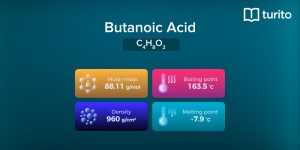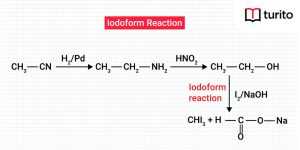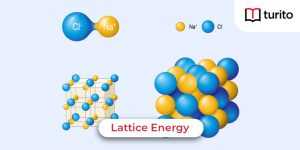Potassium carbonate is potassium, carbon, and oxygen-containing inorganic chemical. In addition, potassium is well recognized for its ability to shed one electron to create a stable octet electronic structure in the outermost shell. As a result, a potassium carbonate formula will comprise two potassium ions and a single carbonate anion. Hence, it has the chemical formula K2CO3. Alternative names include di-potassium carbonate, pearl ash, and potash carbonate.
Physical Properties of Potassium Carbonate (K2CO3)
According to the potassium carbonate formula, it is a white mineral that separates into potassium and carbonate ions when mixed with water. Due to its capacity to hold onto water particles, it frequently takes on a moist or wet material appearance.
The following table lists some typical physical characteristics of potassium carbonate, including its molar mass:
- Potassium Carbonate Molar Mass is 138.21 g/mol, computed from the potassium carbonate formula.
- The substance has a density of 2.43 g/cm3.
- Its status as a white hygroscopic solid—i.e., its ability to hold onto water molecules—has been well described.
- 891°C is the melting point. It has no boiling point because it breaks down when heated to extremely high levels.
- In addition to being soluble in water, it is also soluble in a methanol solvent and indissoluble in an ether and acetone solvent.
- In the same way as potassium sulphate, it is a fire-resistant substance.
The Structure of Potassium Carbonate (K2CO3)
The structures include two potassium cations attached to a central carbon anion, CO32. At temperatures below -47𝇈C, it also tends to be a valuable stone. Additionally, its compound structure can be represented as follows, using the standard representations for natural particles.
Production of Potassium Carbonate (K2CO3)
- The interaction involving potassium hydroxide and carbon dioxide produces potassium sulphate for industrial use. The balanced chemical interaction to produce K2CO3 as an end product is as follows:
2KOH + CO2 → K2CO3 + H2O
- Comparable to how potassium sulphate is made, industries may also make potassium carbonate in this way. This process causes potassium chloride to interact with carbon dioxide when an aromatic amine molecule is present, producing potassium bicarbonate as a byproduct. When potassium bicarbonate is reduced, potassium carbonate, water, and carbon dioxide are produced. The following adjusted chemical equation represents the chemical formula for potassium carbonate as well as other substances:
2KHCO3 → K2CO3 + H2O + CO2
A more modern, but still crude, method of producing potassium carbonate is to burn a mixture of finely ground potassium nitrate and carbon (or potassium nitrate and sugar), usually in the form of coke or charcoal. To ensure that all potassium nitrate reacts, use an excess of carbon and thoroughly mix the two reactants.
Uses of Potassium Carbonate (K2CO3)
Let’s examine the following applications for potassium carbonate:
- K2CO3 compound name is potassium carbonate which is a primary material in the light sector, pharmaceutical sector and in basic inorganic chemical processing. It has mainly been used to make electrode tubes, optical tube assemblies, TV tubes, printing supplies, bulbs, dyes, photographic equipment, pigment, electroplating, polyamide powder, cowhide, crystalline, potash detergent, pharmaceuticals, and ceramic construction supplies.
- The dry powder, rubber protecting agent, and gas adsorption are on the flip side.
- Syngas from chemical fertilizer production can reduce carbon dioxide using this substance.
- Additionally, it serves as a potassium fertilizer.
- Furthermore, this expands its range of uses in industries, including gastronomy, food, and detergent construction.
Difference Between Potassium Carbonate and Potassium Bicarbonate
Potassium hydrogen carbonate is the monopotassium form of carbonic acid. It is used in organic agriculture to combat fungal growth and apple rot because it possesses fungicidal qualities. It has functioned as a pesticide, controlling the acidity of food, and as an antifungal agent.
Potassium hydrogen carbonate is both an organic and a potassium salt. The main distinction between potassium carbonate and potassium hydrogen carbonate is the presence of one hydrogen ion in potassium hydrogen carbonate molecules as opposed to none in potassium carbonate molecules. Both of them are potassium salts, making them very alkaline substances.
Potassium Carbonate (K2CO3) Applications
Let’s examine some of the significant uses for potassium carbonate:
1. Drying Agent Manufacturing:
Compared to other drying agents like calcium chloride and magnesium sulphate, it is a gentle drying agent. It might not work with acidic substances and is unsuitable for them. However, if an organic phase has a small quantity of an acidic contaminant, it may help dry the phase. Before distillation, it can be used to cure a portion of the methyl esters, ketones, and other organic compounds.
2. Food Industry:
It is included in the preparation of grass jelly, a dish popular in Southeast Asian and Chinese diets, along with Chinese hand-pulled vermicelli and moon pie, which are all conventional applications for it in food. It is used for the tenderization of t ripe. Tripe is a form of the stomach lining you may eat from various agricultural animals. Tripe mostly comes from cattle, pigs, and sheep.
It is frequently used as a baking ingredient in German gingerbread recipes. To avoid injury, potassium carbonate consumption must be constrained to a certain level, and unsupervised use is strongly discouraged.
3. Chocolate-making Industry:
By adjusting the pH (that is, reducing the acidity) of organic coffee beans in the cocoa powder, alkalization can create Dutch process chocolate while enhancing scent. Dutching refers to the technique of infusing cocoa powder with potassium carbonate. The resultant products are aptly called Dutch-processed cocoa powder. A Dutchman created the procedure for the first time in 1828.
4. Pharmaceutical Industry:
Effervescent pills also include potassium carbonate. Low levels of potassium in the body occur owing to an insufficient diet, nausea, vomiting, diarrhoea, or specific drugs like corticosteroids or diuretics. In such cases, effervescent pills and powders are provided to give potassium. They disintegrate swiftly and are sturdy, practical, and lightweight.
5. Cosmetic Industry:
K2CO3 with the compound name potassium carbonate, is popularly known as pearl ash due to its white appearance, is an odourless powder. It is utilized in liquid shampoos, foundations, lightning creams, pimple treatments, and industrial soap production. Please avoid direct exposure as it is corrosive to the skin in its natural form.
Potassium Carbonate Safety Information
-
Contact with the skin:
It can irritate and swell the skin. Scientists’ investigations of this compound show that this substance is not a skin sensitizer. Skin sensitization studies evaluate a substance’s capacity to alter the immune system so that a subsequent touch results in a more intense response than the initial one.
-
Contact with the eyes:
It might irritate the conjunctiva and create intense erythema on the eyelids. Eye contact for a long time without treatment can harm your eyes severely and permanently.
-
Ingestion:
Oesophageal, oral redness, blisters, discomfort, gut & bowel inflammation, edema, and rashes can all result from ingesting this substance. Excessive use can result in nausea, ulcers, convulsions, and even mortality.
-
Inhalation:
Inhaling this substance may irritate the upper airways, causing cough and producing mouth and windpipe erythema.
In the event of unintentional contact,
-
Eye contact:
If you unintentionally get acid in your eyes, rinse them thoroughly with water for at least 30 minutes while lifting your upper and lower eyelids. Remove any contact lenses you may be wearing. Make a doctor’s appointment right away.
-
Skin contact:
After skin contact, immediately remove any infected clothing. Thoroughly rinse the skin with a lot of water.
-
Inhalation:
If someone inhales it, withdraw them from the area. If the heart has ceased pumping, do CPR; if the respiration has stopped, start artificial respiration.
Conclusion
K2CO3, with the compound name potassium carbonate, is an inorganic substance primarily generated from potash. It is a white powder that dissolves in liquid. It tends to become a liquid and frequently takes the form of a moist or wet solid. Among the many names for potassium carbonate are pearl ash, carbonate of potash, salt of tartar, and potash. It often comes in the form of crystallized powder or granules. It has no colour, smell, or transparency.
Potash may be produced in various ways, although it is typically produced in factories using an electrolysis technique. Among the many uses for potassium carbonate are the production of chemical compounds, fertilizers, detergents, and heat-resistant glassware. Glass and soap are the two primary products made using potassium carbonate.
Frequently Asked Questions
Q1. Is potassium carbonate a volatile compound?
A: Yes, K2CO3 is reactive. Potassium carbonate dissolves in water to generate an alkaline solution. However, when it reacts with acids, it generates water, salt, and carbon dioxide gas in a liquid phase. Here is the chemical reaction: Due to the fundamental characteristics of this substance, it has been used in several food items as a stabilizing agent, water conditioner, and acidity controller.
Q2. Can potassium carbonate safely be added to food?
A: Although not all these are suitable to mix with food, food-grade potassium carbonates are readily accessible commercially. The comparable potassium carbonate can be added to meals without risk. It is a powerful base, so if we were given more than a modest quantity, it would not taste very pleasant.
Q3. Why does potassium carbonate come into play while making soap?
A: Soaps are made from potassium carbonate, sometimes known as potash. Being a basic substance, it acts as a bulking agent by neutralizing the fatty acids in soaps. Saponification is the method by which fatty acids convert into soaps by using an alkali solution or potassium carbonate.

Relevant Articles
Butanoic Acid – Structure, Properties, Uses
Butanoic Acid The carboxylic acid, butanoic acid, has the structural …
Butanoic Acid – Structure, Properties, Uses Read More »
Read More >>What is Iodoform? Characteristics and Uses
Iodoform The formula for Iodoform is CHI3. It is biotic …
What is Iodoform? Characteristics and Uses Read More »
Read More >>Lattice Energy – Explanation, Factors & Formulas
Lattice Energy Lattice energy evaluates the intensity of the ionic …
Lattice Energy – Explanation, Factors & Formulas Read More »
Read More >>Lead Acetate – Definition, Properties, Uses
Lead Acetate Have you ever licked lipstick when you sketch …
Lead Acetate – Definition, Properties, Uses Read More »
Read More >>




















Comments: